Oh my goodness gracious—it’s done!
And oh—golly—wow—my first ever actual underarm gussets.
I can move and weave and wave my arms above my head while sporting a collection of coffee filters that just happen have become— a paper shirt.
I’ll try not to wear it when, say, I prune roses or clear brush, but no guarantees. It is so comfortable I could easily forget its delicacy. It feels…like me.
Not just the me of today (thoroughly modern and up-to-date while also a bit more fragile than I used to be, don’t cha know), but also the me who is connected to shirt-makers through the millennia, individuals who have built practical clothing from hand spun and woven rectangles without wasting an inch of fabric.
My ancestors, in point of fact. And yours.
Of course when we last saw this project, I was still gathering pieces and starting to sew them together in hope that they would fall into place. With two body pieces, a couple of strips for shoulder straps/sleeve tops, and four more for the sleeve sides, much had yet to come together.
One side was narrower than the other for instance (see photo above), and they needed to be the same.
How to fill the gaps at the sides?
The one bit of cloth I had left could have been cut lengthwise into two strips, but lengthwise slicing of handwoven fabric is not a thing I undertake lightly. A long raw edge, no matter how carefully hemmed and machine stitched for semi-security, is not my idea of a good time. The up and down of running stitch along smoothly overlapping selvedges on the other hand, is a great joy—indeed, almost the whole point. I even use a three selvedge lash-on at the beginning of every warp for another unravel-able end.1
Now if I were planning to only hang this shirt on the wall, I suppose a lengthwise cut wouldn't make much difference. But honestly that never occured to me until this moment. Restful as this garment is to look at (I've been hanging it on the wall as I work), my allegiance and devotion are to a world where art, craft, form, function and decoration all spend time together--a flexible and expansive region where a well constructed tapestry can keep a gal warm at night and her hand made running shoes (or shirt) can rest in a frame until called into action. 2
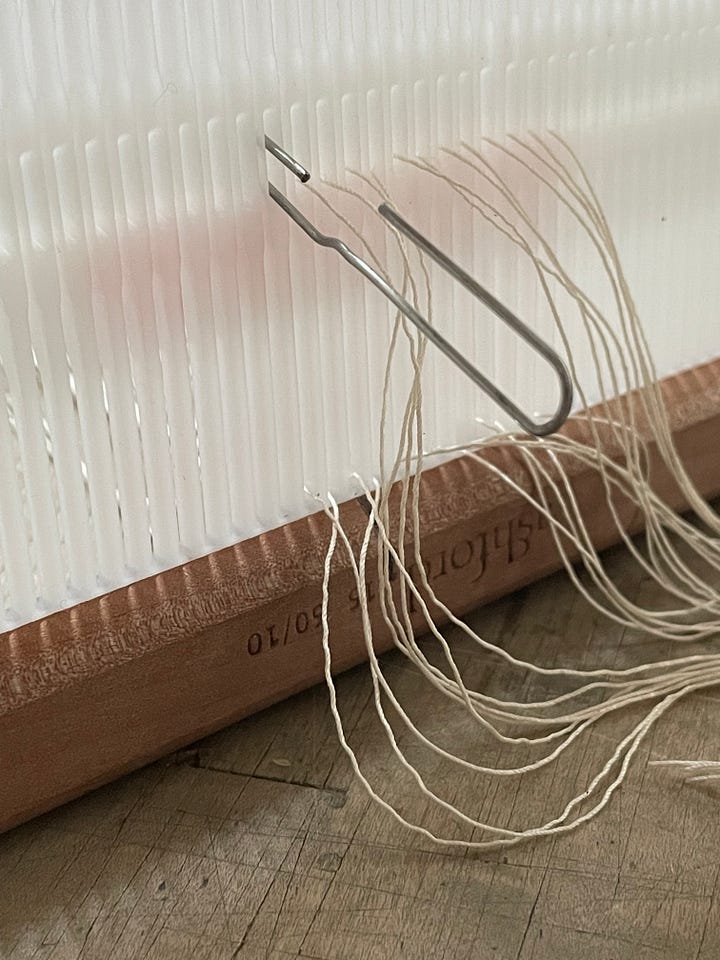
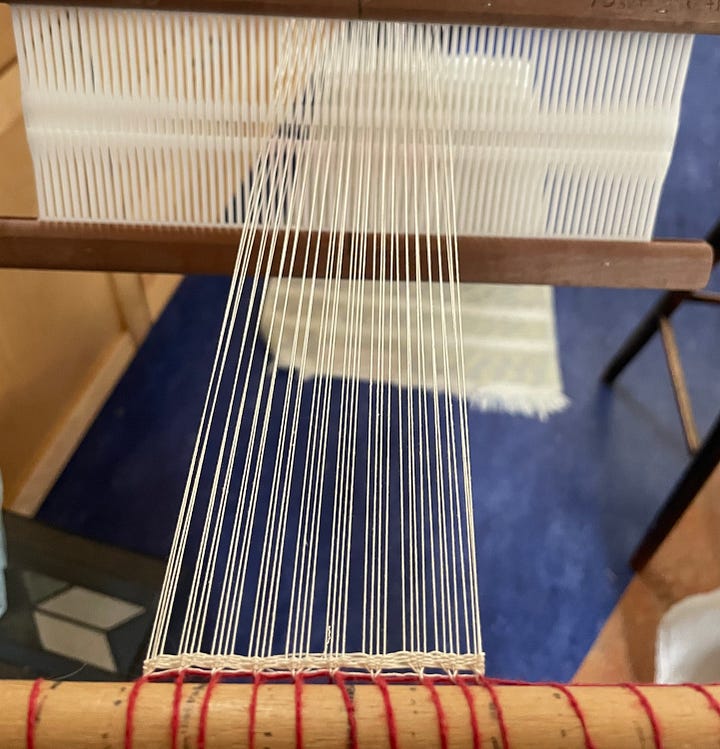
All of which is to say—cutting the strip lengthwise was not in the cards. So I snagged a few skeins from my paper tapestry stash, spun a few more filters, retrieved loom bits from the cupboard, and wound a warp 2 1/2 inches wide and 60 inches long. It was more length than I needed but an extra smidgen of fabric often comes in handy.
The weather was mercurial last week too, so though the garden called softly, I was happy to stand in front of the gas fire with a stick shuttle, a cup of tea and The Long Thread podcast,3 tapping weft into place.
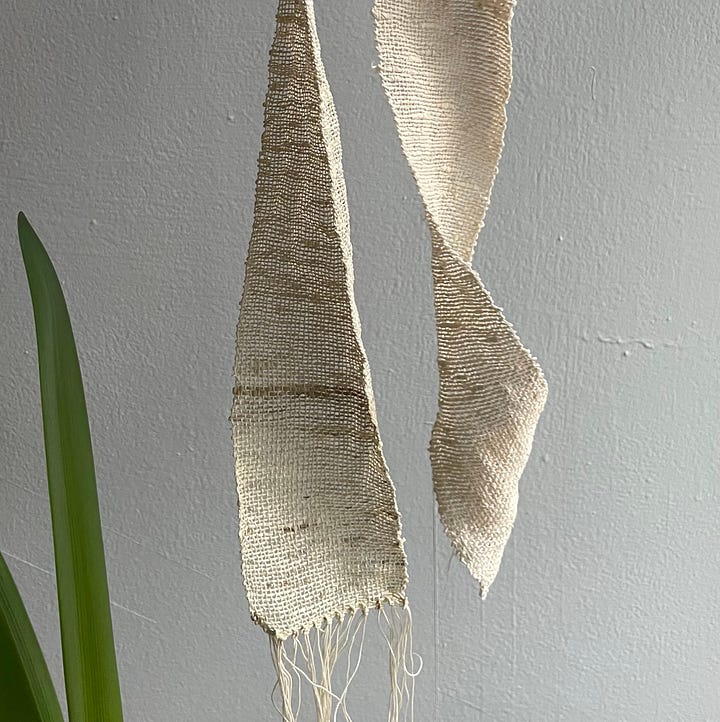
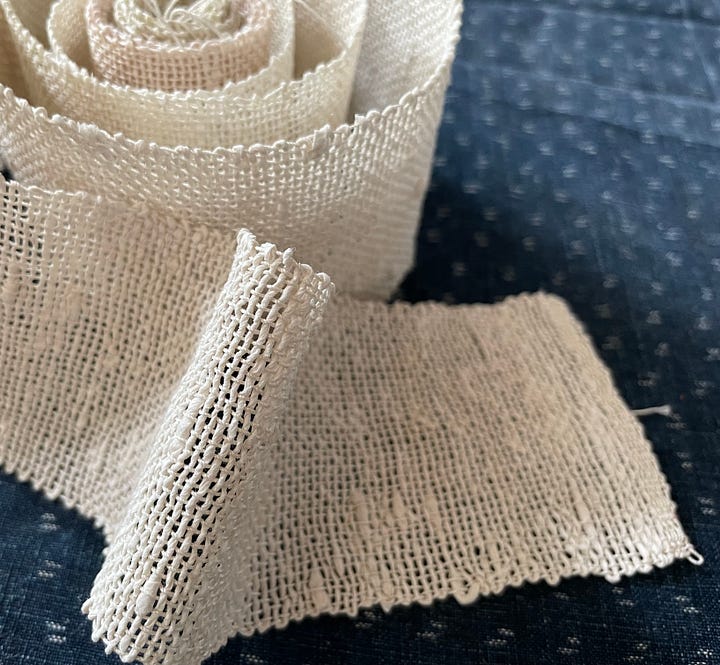
And almost before I knew it, the new swath was woven, washed, dried, pressed (freshly spun singles energy is amazing), measured, cut, and sewn into place—the shirt ready to try on.
As I’m sure you know (unless you’re better about basting than I), trying on a garment bristling with pins is crazy awkward). But even so it was clear that while most of the shirt fit as I hoped, the underarms needed… something. Gussets made the most sense.
Happily, I had woven those extra inches “just in case.”
Aren’t they adorable? Frankly, I was amazed by how naturally they fit in and how much they enhanced the whole thing.
Also deeply appreciative of my stalwart sewing machine who made it possible.
Hand sewing seams is a treat with wool and linen, but there is something about the density of the paper yarn that turned out to be particularly hard on my hands. Basting was fine (and necessary), but for the actual final seams the White Rotary was perfect. She’s such a dear.
At 110-ish years old (but who is counting), she has been willing to help me stitch all manner of materials in all manner of places, for over four decades. She doesn’t go backwards— but I don’t want to go backwards either, so what can I say? She knows what she is about.
And the shirt, all of sudden, was done.
And there is nothing left to say.
Well, actually there is. In truth I could go on and on about any number of things:
-how it, like my other two woven shirts, is fully reversible—and how much I love this in a garment (apparently some people don’t).
-how the two sides are constructed differently: rectangular blue striped side with the warp running top to bottom, and trapezoidal yellow striped side with the warp running side to side;
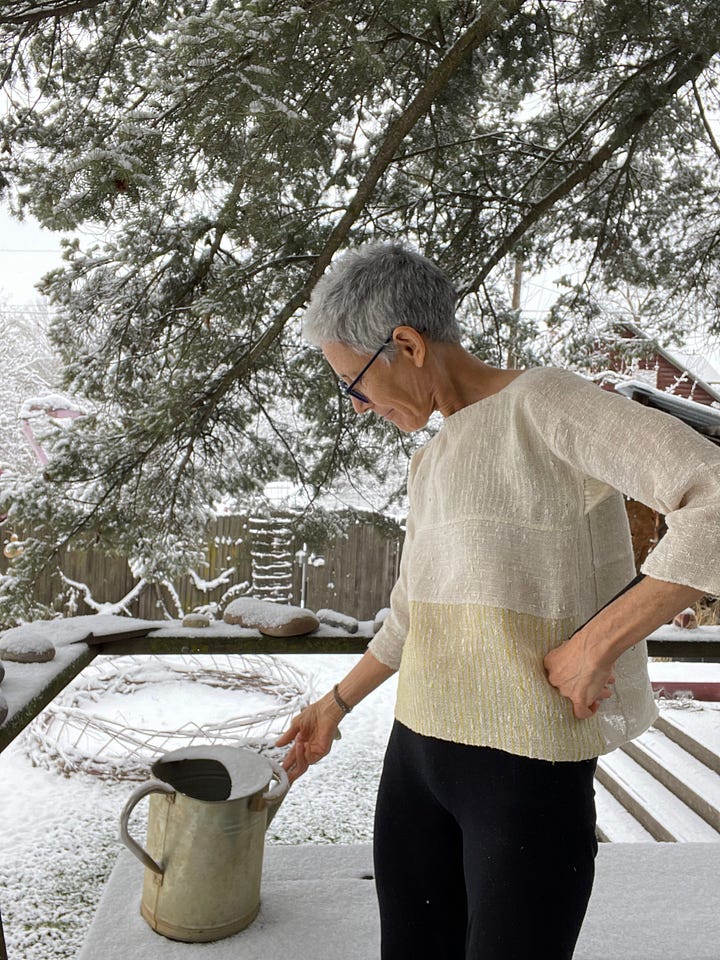
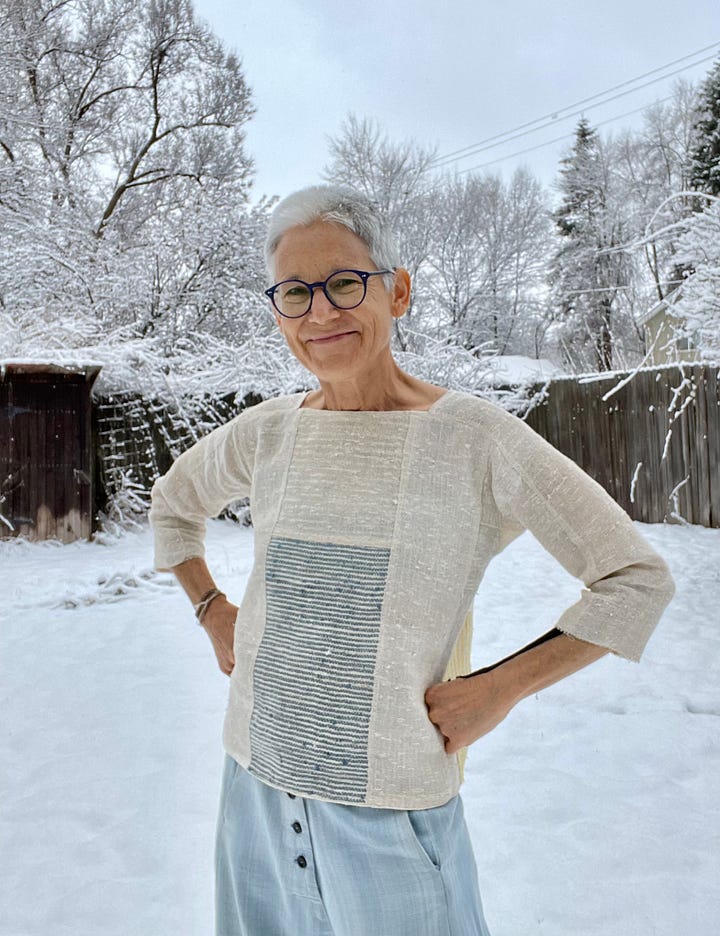
-how I’m just now noticing that I put my hands on my hips (or up in the air) for every photograph in this series—camera shy hands? armpit pride? general selfie awkwardness?
-how I’m still contemplating the sleeve length (there is just enough fabric left over for cuffs should they seem necessary—which they don’t at the moment; what do you think?);
-how the shirt is constructed so much like my Somewhat Slanted Sweater4 that a person might think I don't like curves;
-how silly it was that I did not take shirt-modeling photos yesterday afternoon when there was a brief smidgen of sun…
…choosing instead to brush up on new tunes for a session with friends later in the evening;
—how that decision led to me being outside in the falling snow in my long underwear and rubber boots, and rather than the light-filled semi-translucent bowl I imagined I’d be wearing, the shirt is the shirt that it is—a fine thing really for who does not want to be elementally oneself whenever possible;
-how it only came to me half way through this so called photo shoot that I might be warmer and more age-appropriate if I put on some pants and I eventually did cuz the blue/blue thing is pretty and two layers is warmer than one on a snowy April morning;
-how after making three backstrap-strip shirts5 which collectively need a name -- but what-- I now have ever more thoughts and ideas and designs to try which, if I'm lucky and diligent and keep twirling my spindles, might someday arrange themselves into actual garments;
-how powerful a thing is sartorial curiosity;
-and how, like my beloved White Rotary, it feels best to keep going forward.
But we’re here at the end now, so we’ll have to chat all those other things some other day. Or below in the comments. Or even just let them float around, for now.
This technique is described in Backstrap Dialogues
Well, I suppose using paper bowls in the kitchen would lead to a waste of good soup— even if they do work brilliantly as boats…
All the episodes of The Long Thread Podcast are great, and I was particularly tickled to get to listen to the most recent one in which Anne Merrow interviewed heddle carver and author Kerstin Neumüller while I was actually weaving a long narrow strip of cloth. I’ve long been a fan of Kerstin’s work, am utterly in love with Margaret, the hand-carved heddle who came to live and work with me, and Kerstin’s new book, Simple Weave, in which she even talks about how to make them. (And no, no affiliate links. Just a fan of both Kerstin and the podcast).
A Sweater Somewhat Slanted —one of my favorite (and most worn) knitting designs; you can see the pattern on Ravelry and in my webstore.
The first two shirts were the linen one I referenced last week, and the linsey woolsey one for which the linen one was was the prototype. The latter featured woven in tabby/tapestry referencing early Coptic garments as explained by Nancy Arthur Hoskins a thing I've never ceased to be interested in (cuz what is more thrilling and overwhelming and ridiculous than putting ALL your favorite things together into one project?).





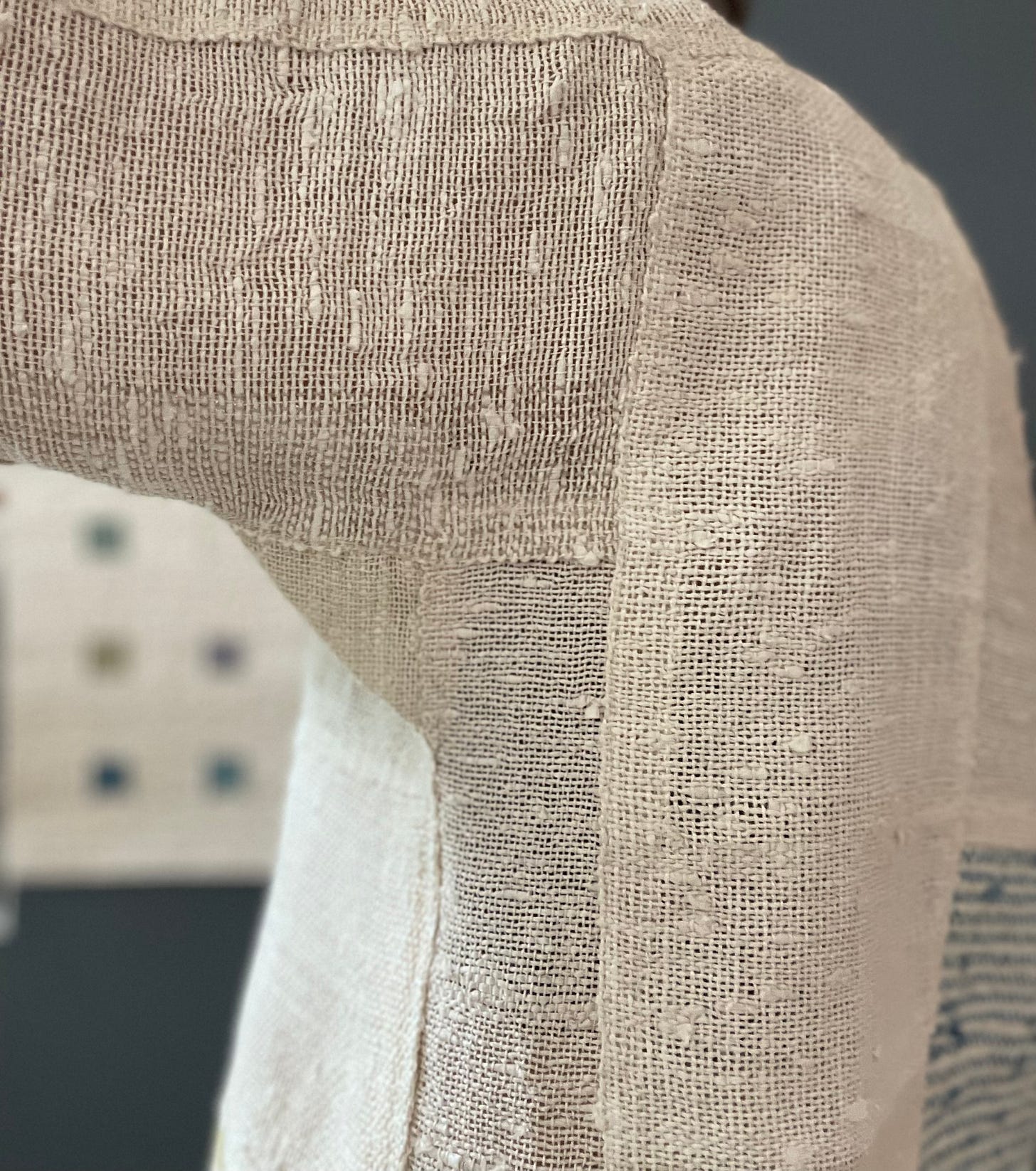
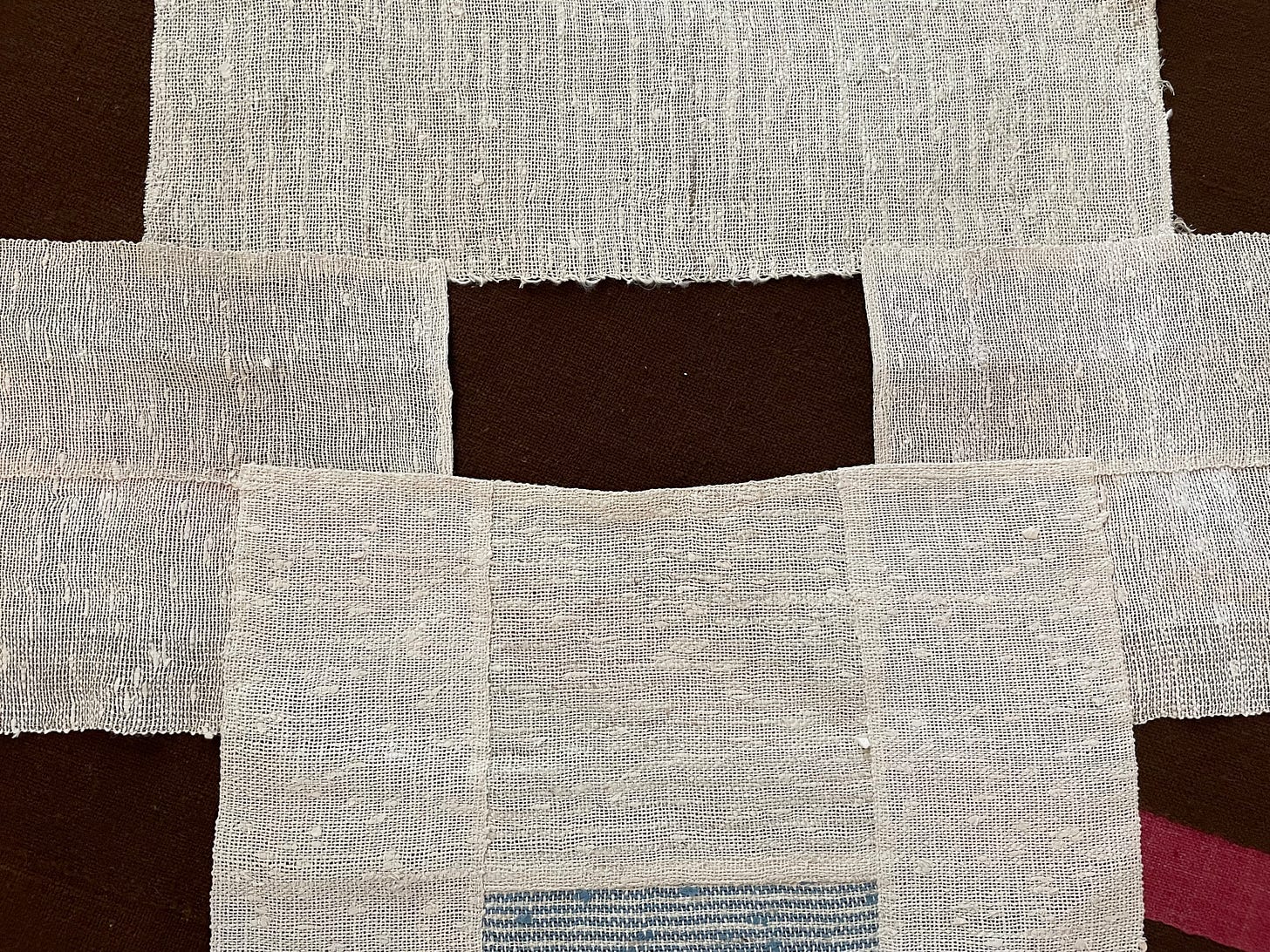
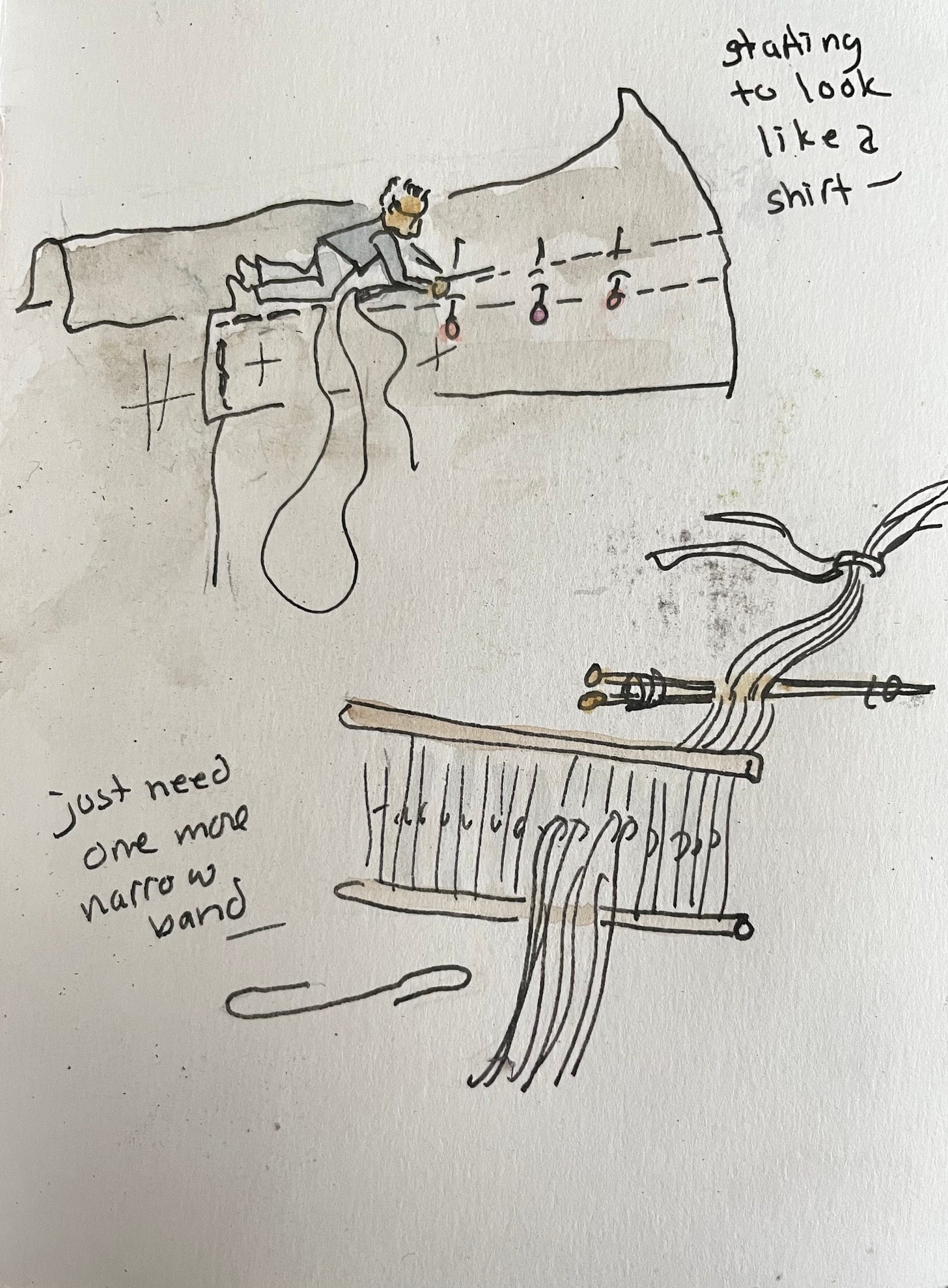
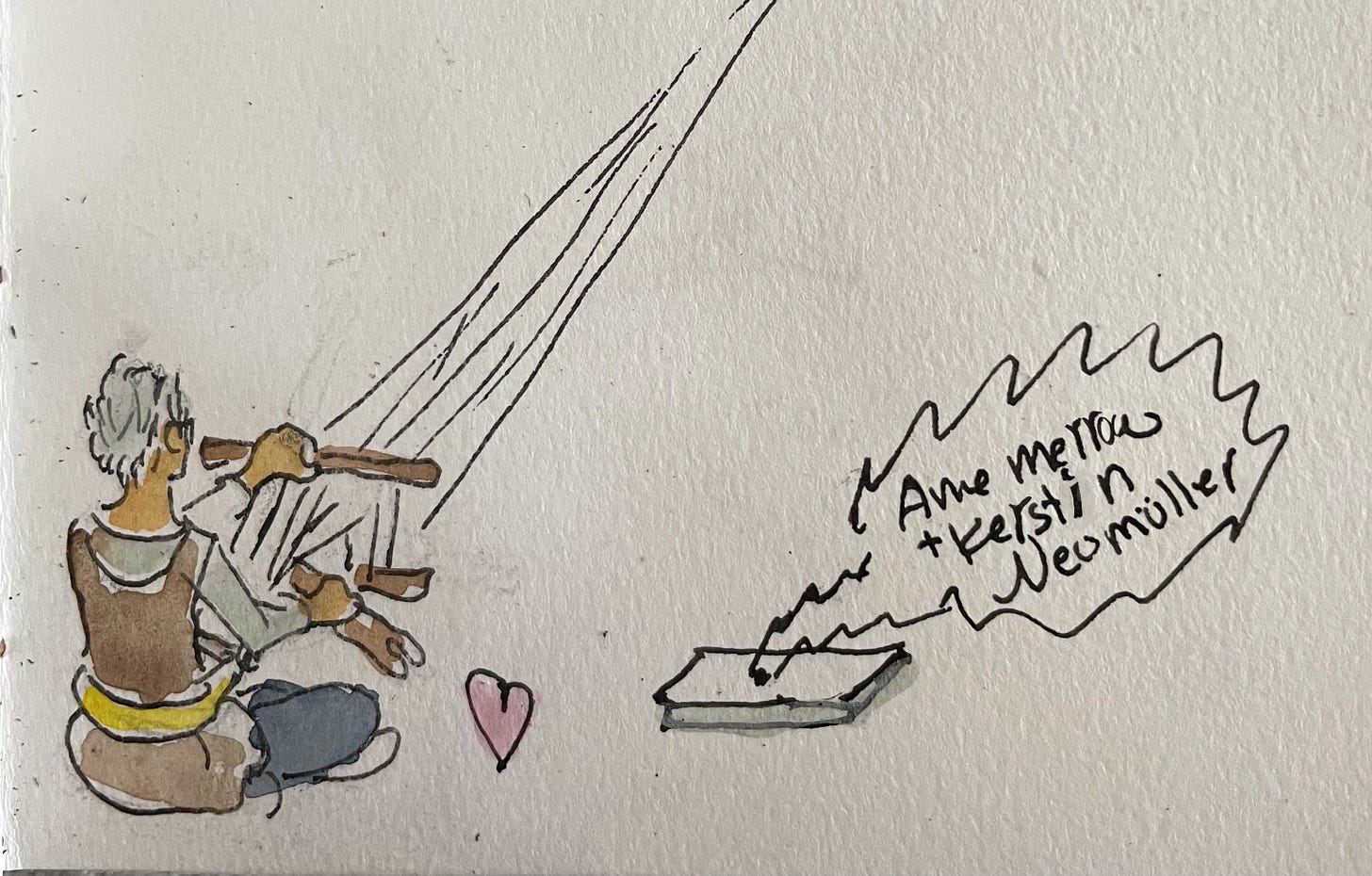
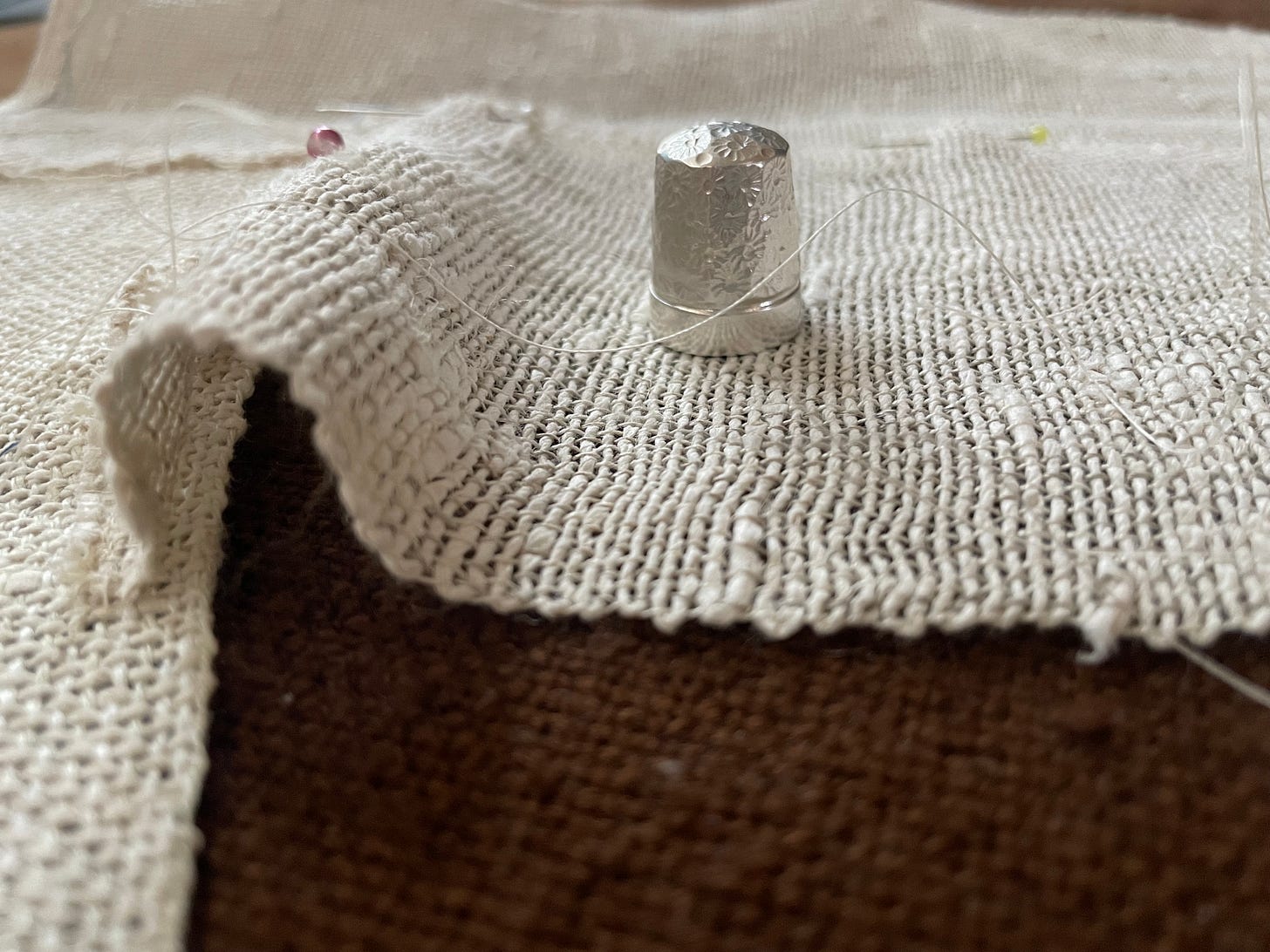
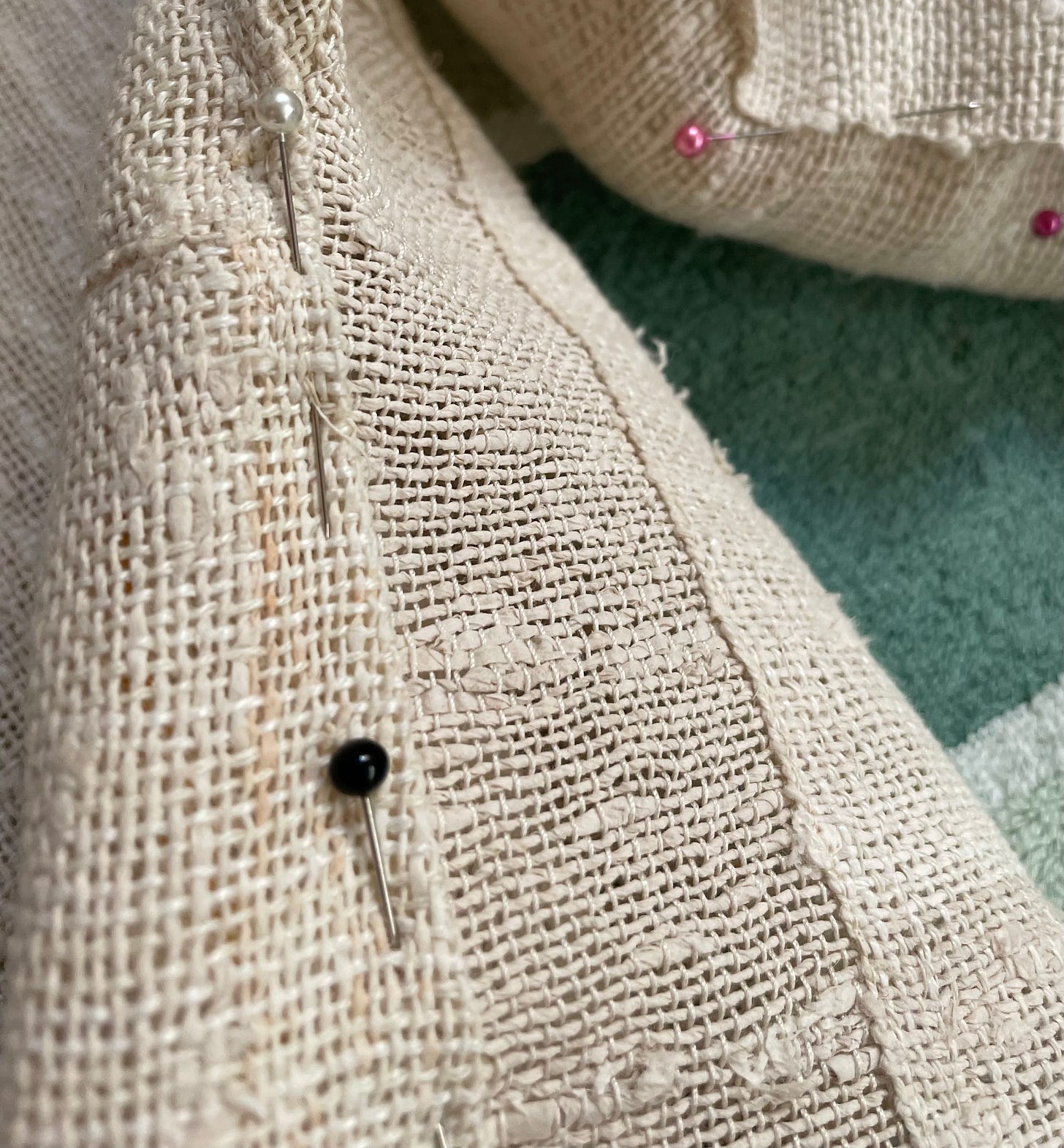
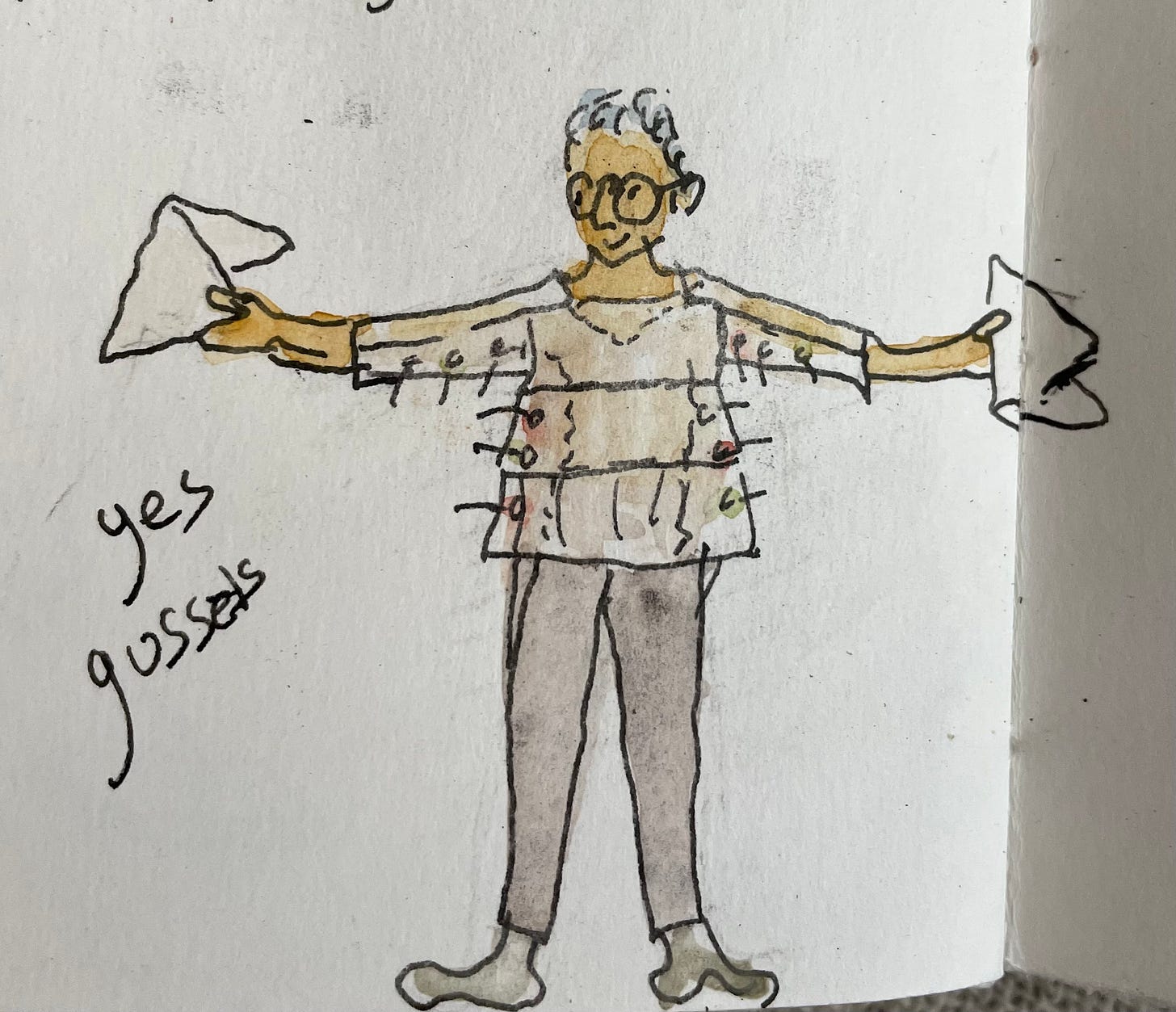
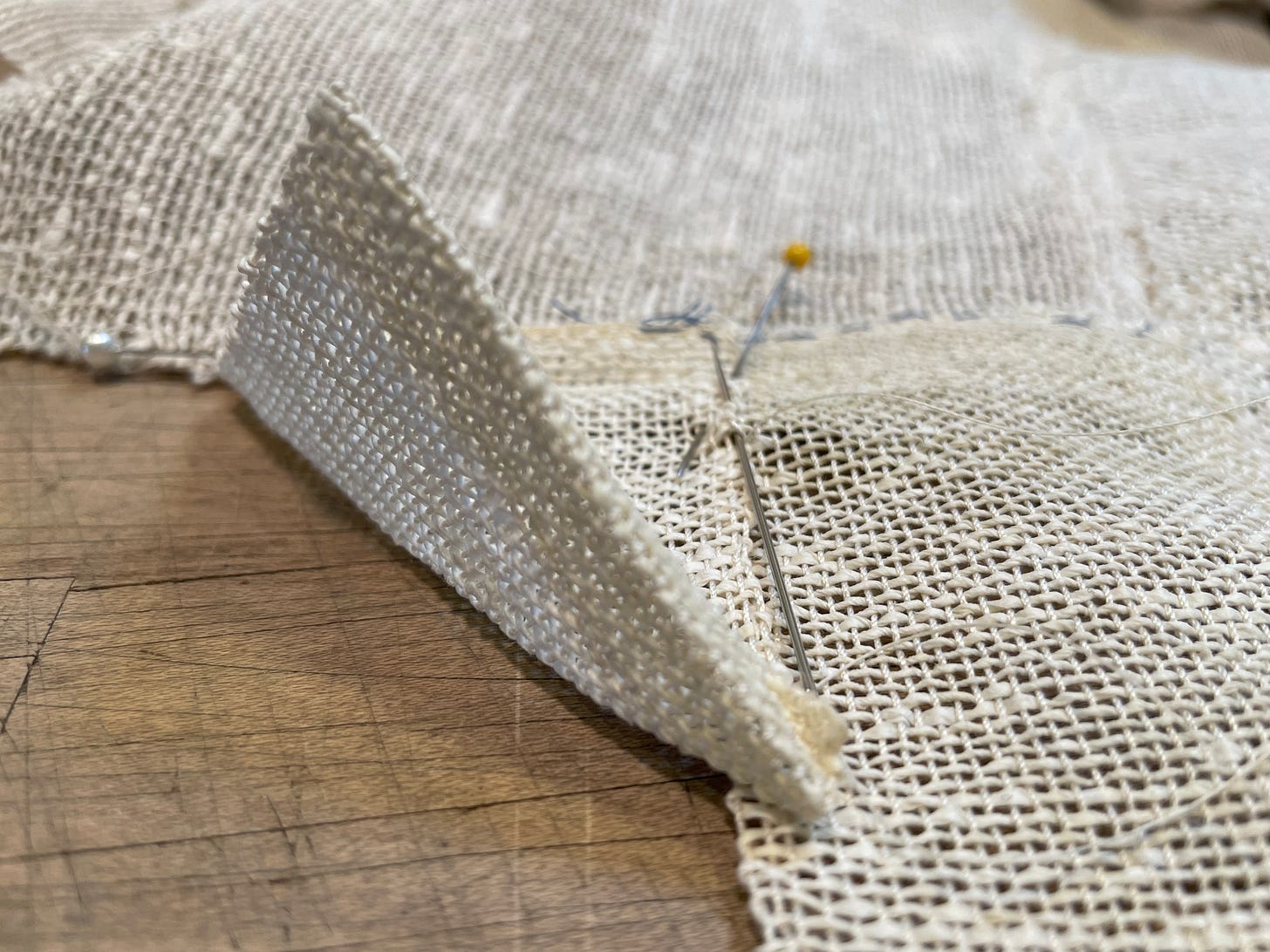
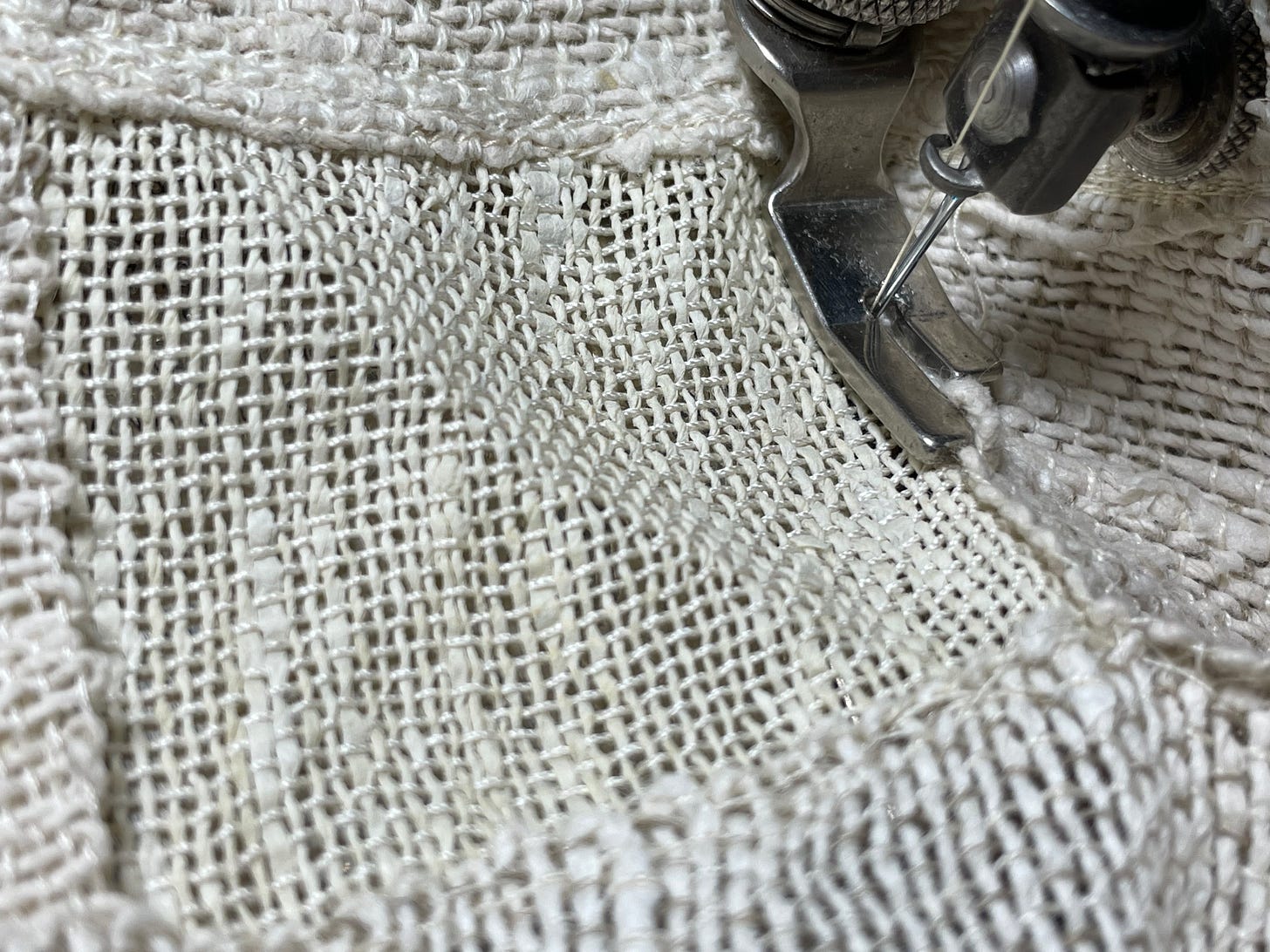

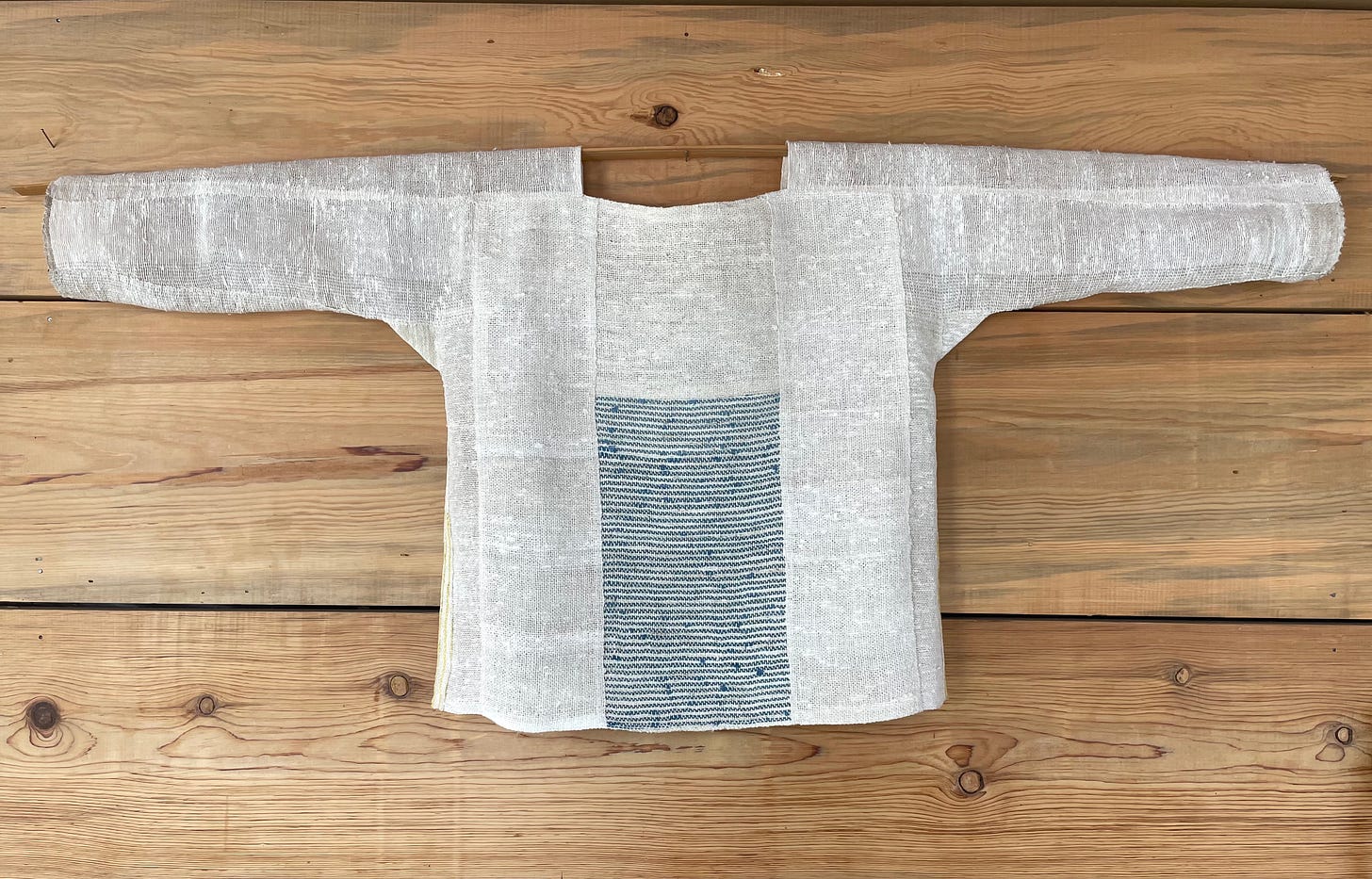
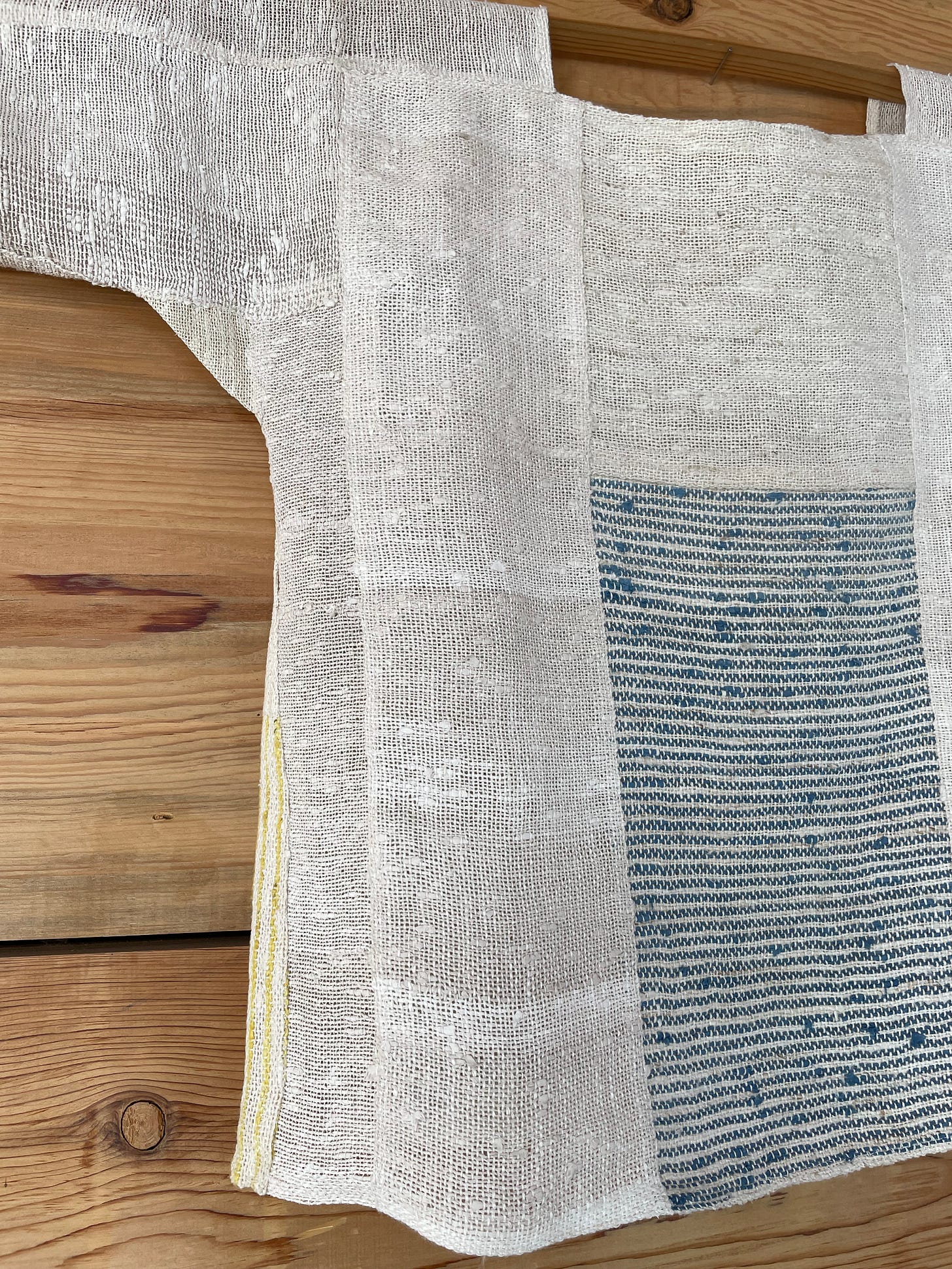
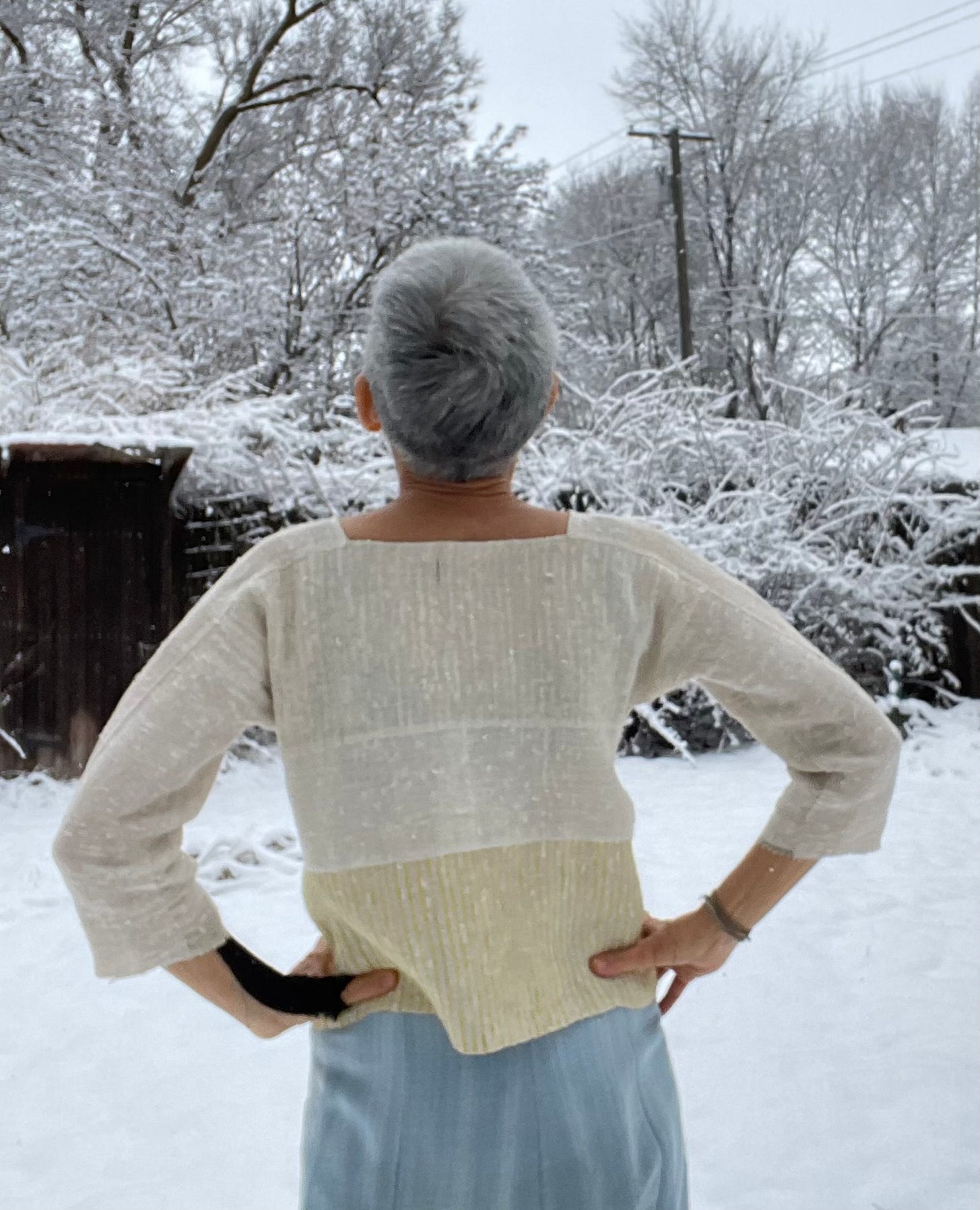
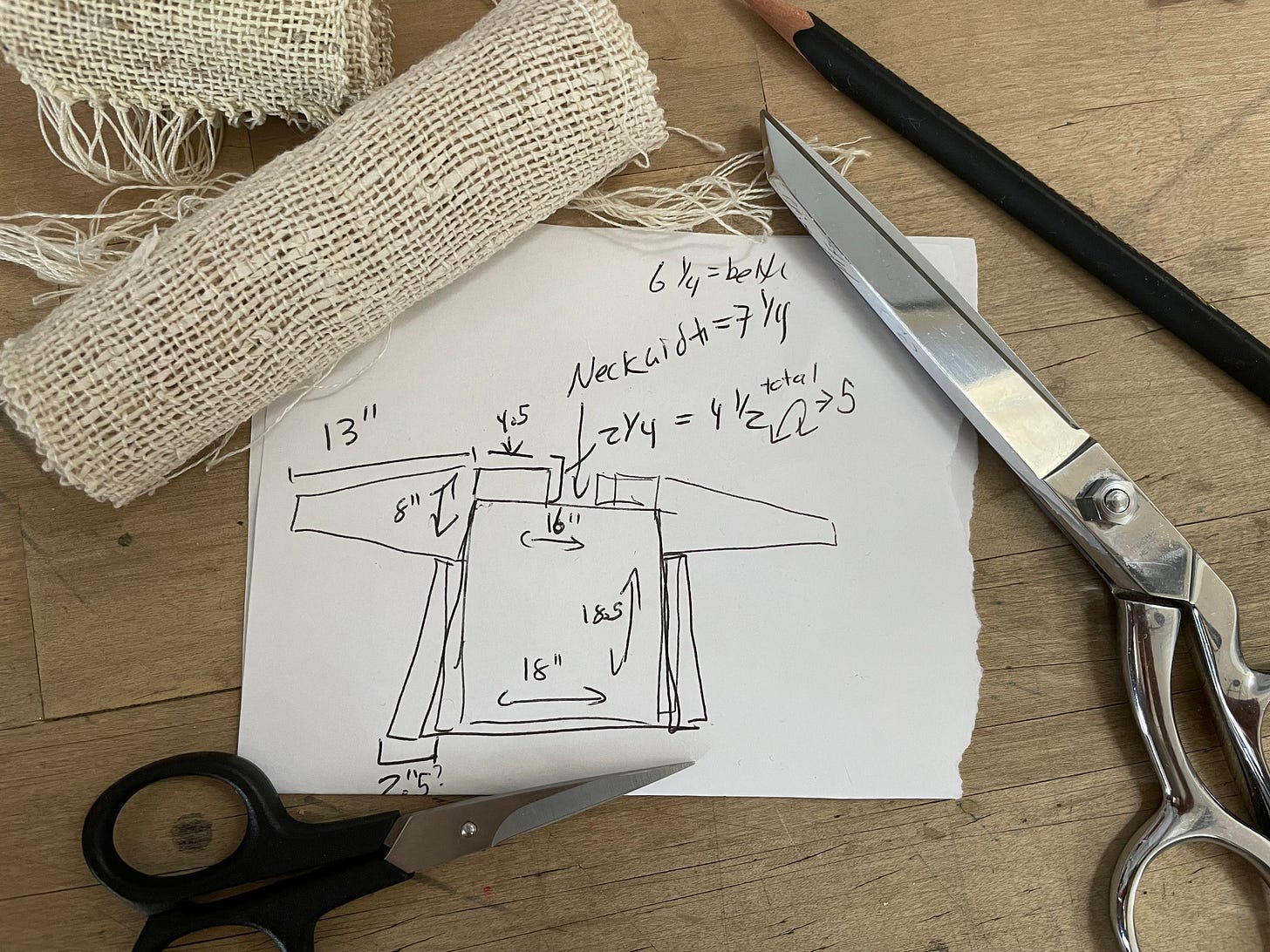


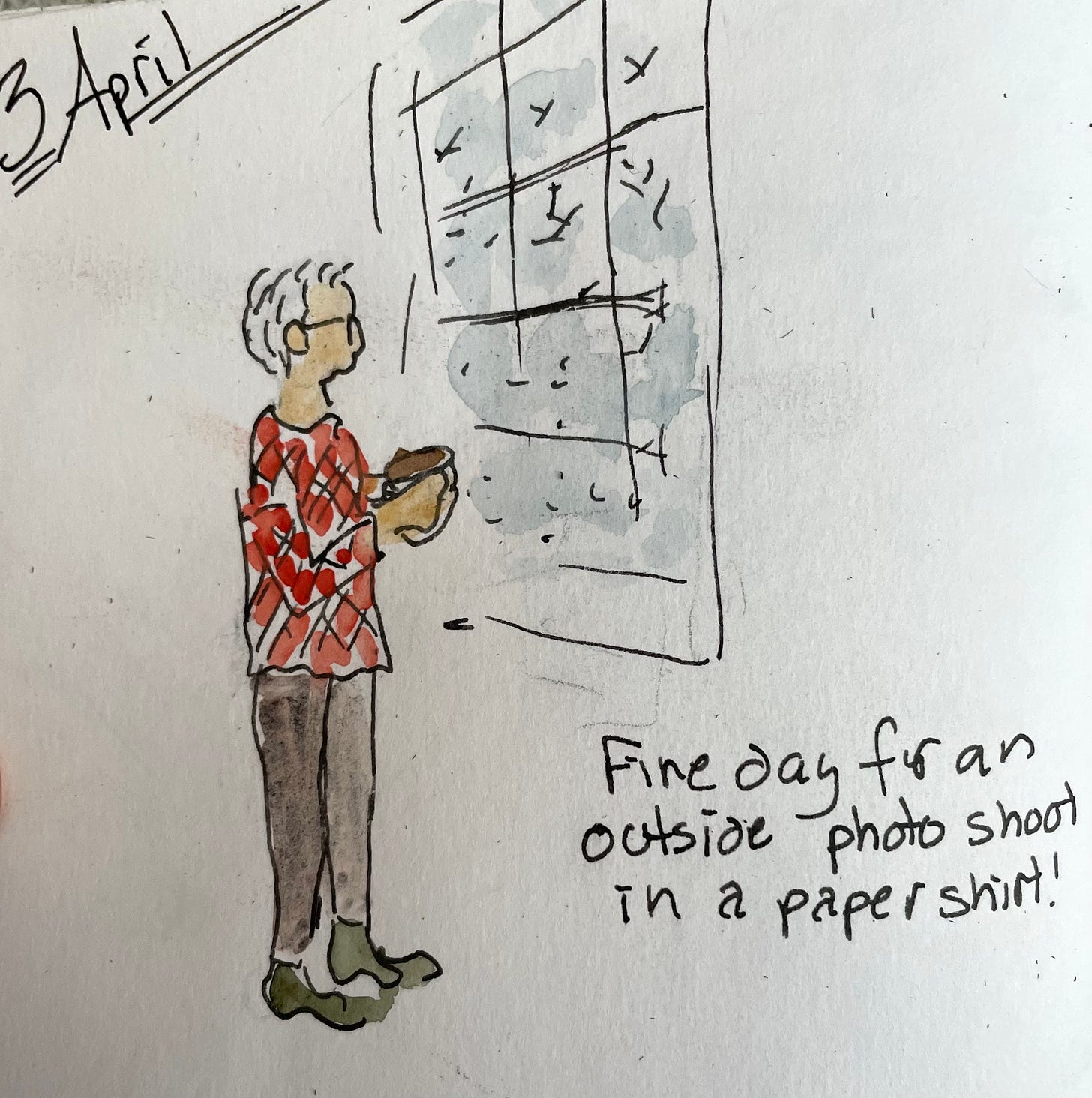
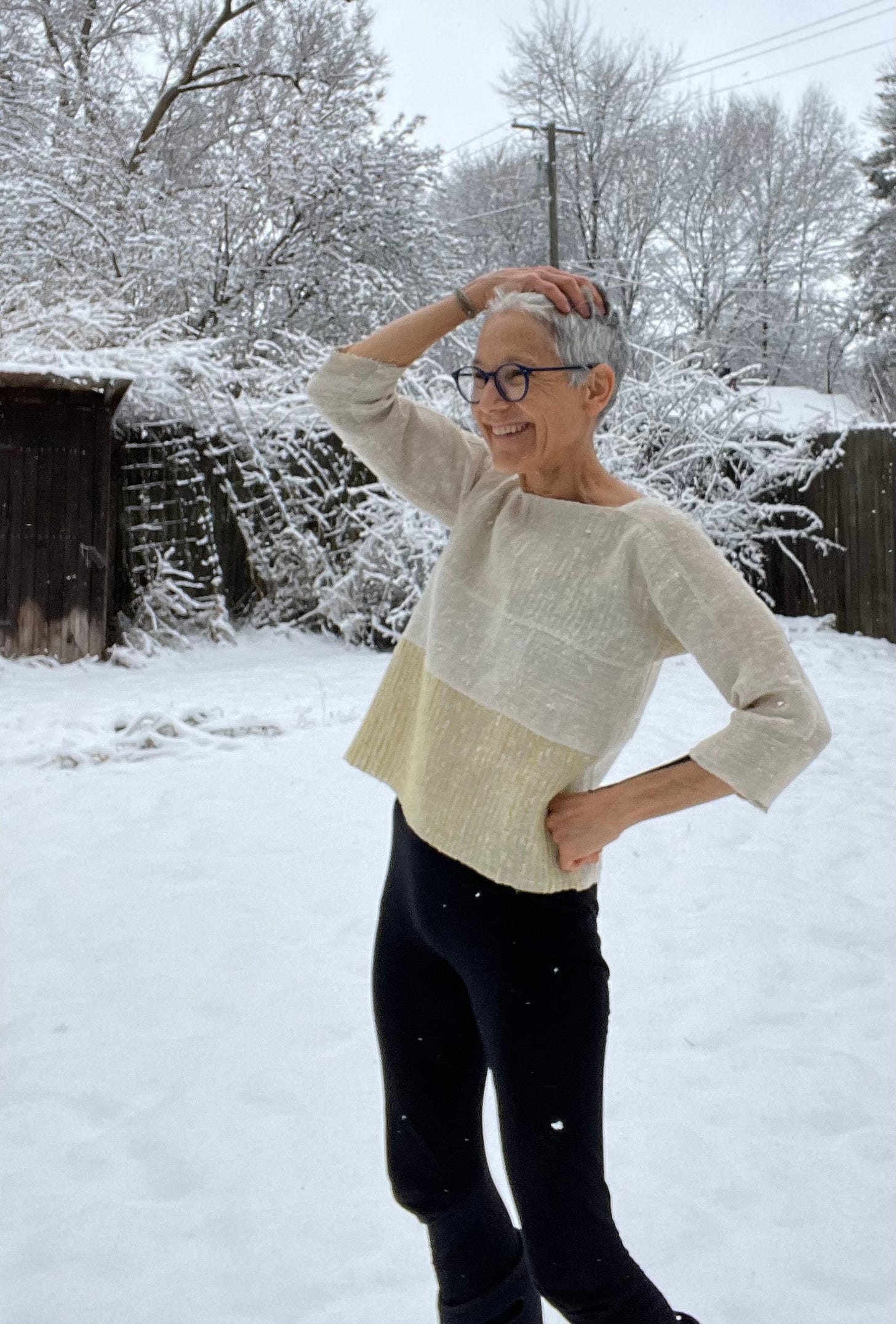
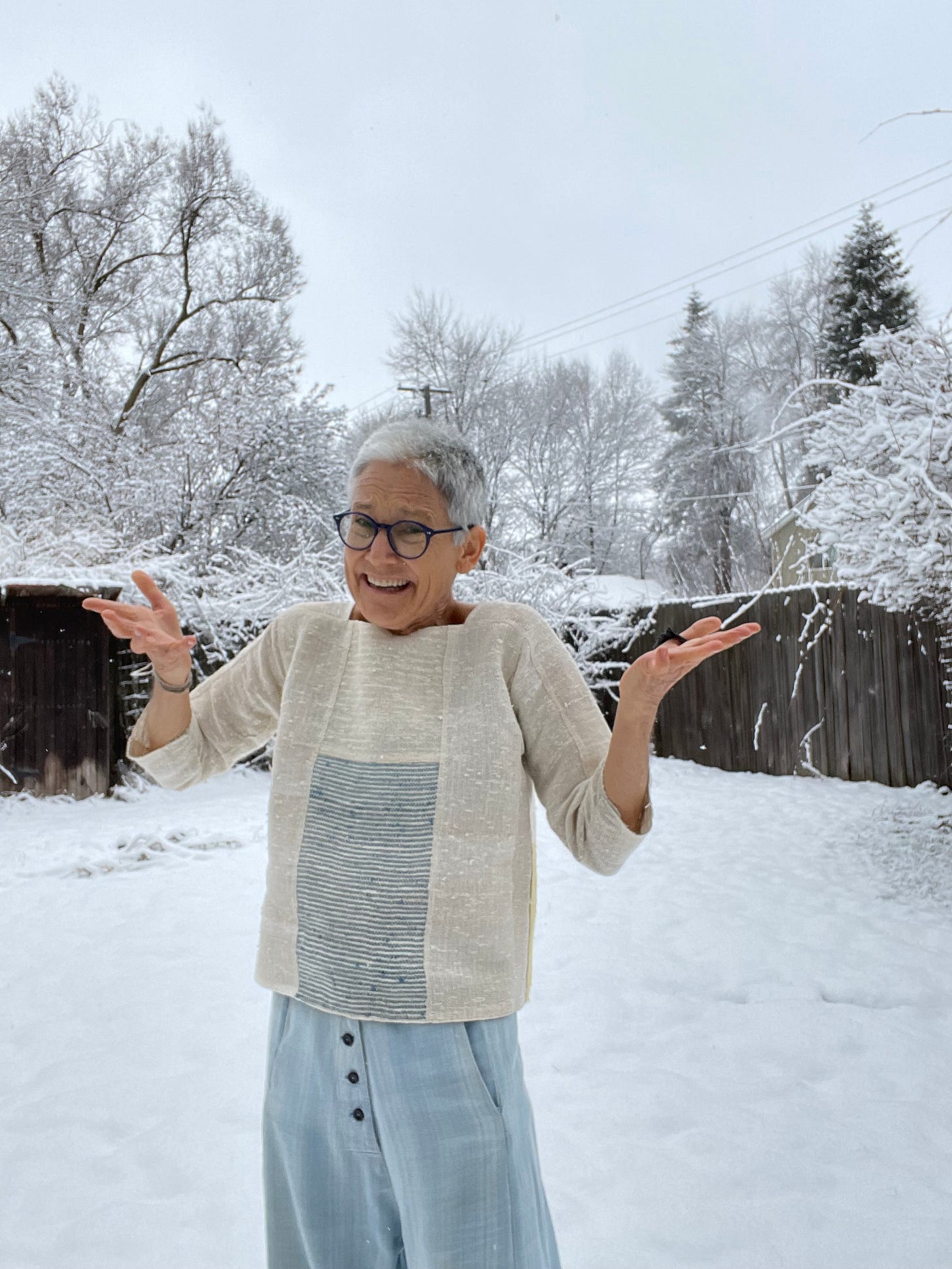

You fill me with Glee, thank you for sharing 💓👍
That is. . . . Just . . . Beautiful! The drawings of the process, just a treat! I have your knitted sweater pattern and now that I have mastered (I use that word loosely….) socks, I think I am ready to try it.